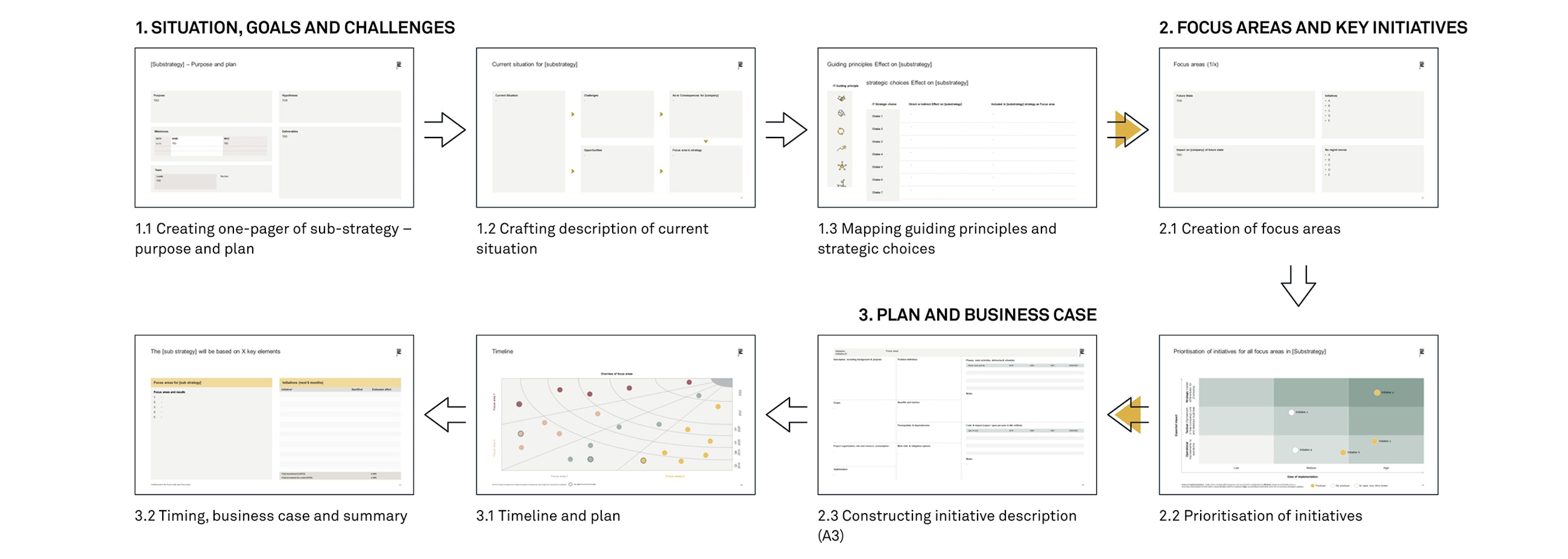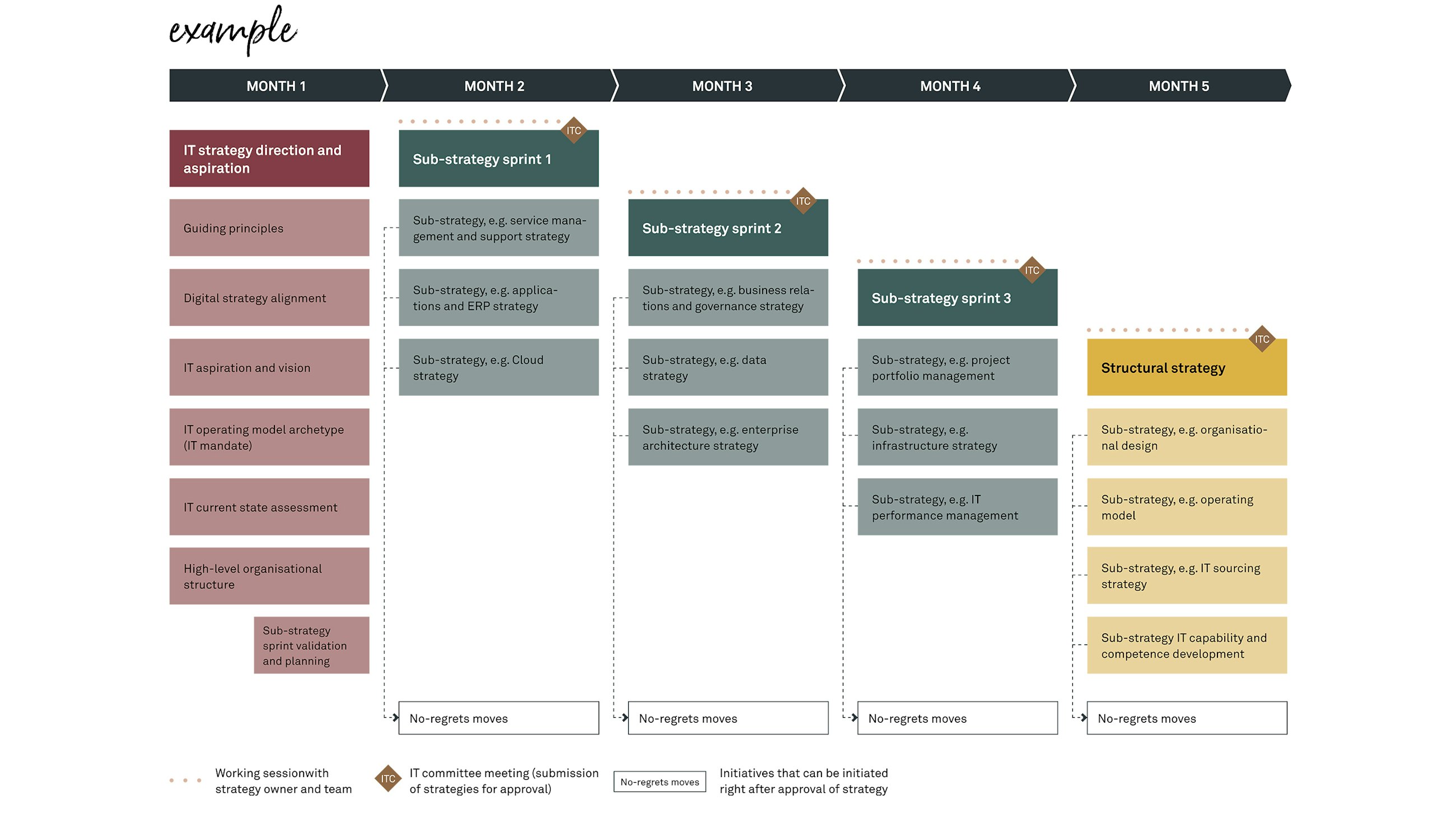Tackling constant change in your environment by creating an adaptable IT strategy
6 July 2021
Doing strategy work, have you ever experienced that initiatives created at the beginning are outdated before ever getting started? Our best guess is YES. That is why we need a new way of working with IT strategy in a process that is agile, sprint-based and resilient.
Creating IT strategy with instant impact and improved throughput of important decisions
That is why we have developed a sprint-based IT strategy approach – based on the agile principles of Half Double. It provides you with a way of making 80 % of your decisions in half the time, a way of kicking off an iterative approach to strategy making and a way of involving people from business management to passionate employees through hands-on experiences in the strategic decision-making.
True co-creation is fundamental
We do not believe in IT strategy being only a boardroom exercise for the selected few or an exercise only for IT. You need to co-create your IT strategy with the people that will live the strategy and make the strategy happen – making sure that options are tested and refined in the organisation as soon as possible.
To ensure ownership, we recommend that you make each of the functional sprints driven and owned by the functional responsible, e.g. that the head of infrastructure owns the infrastructure strategy. In that way you can inspire, facilitate and support a strategy process, where the functional responsible decides the final outcome.
In our sprint-based approach to IT strategy creation, strategy development and implementation happens simultaneously in selected sequences to ensure an agile process. This means that you can put the developed strategy elements in motion before the total strategy is finalised and thus realise strategic initiatives earlier in the process.
Working with sub-strategy modules allows for a flexible and iterative IT strategy development
When strategies need to be replaced, it is not necessarily everything in the strategy that needs to be replaced. This is why we work with sub-strategy modules and in a flexible structure, where the modules can be replaced, refined, added or removed over time.
Take for example Cloud and IT Security which have radically changed the sub-strategy for IT operations. However, this does not mean that you need to change your entire IT strategy, but rather that you need to adapt your IT strategy to selected modules. Adaptability is important. However, 100 % alignment seldom exists. As humans, we want to map all dependencies. We want perfection – but there is no such thing. In the light of that, we have made an approach that is so adaptable that we change the things where we were wrong, or things have changed.
The three impact drivers of an agile IT strategy
You need a number of strategy process factors to be in place to deliver impact of an agile IT strategy successfully:
- Cadence. Ensuring speed and rhythm of the sprint is called “Flow” in the Half Double terminology and it drives forward impact. Focus on fixed meetings with fixed questions to be answered within a fixed deadline that is realistic to meet.
- Decision focus. In Half Double, this is referred to as “Impact”. During each sprint, focus your analysis on the most critical issues and create assumptions that are to be validated. Aim for nimble decision-making that supports making choices fast, so you can learn from them and make new choices when things change. Make decisions modular and fitting together, so when things change you will be able to make a new sub-strategy diving into a specific topic.
- Ownership. Also referred to as “Ownership” in Half Double. Focus on making sure that people in charge take responsibility for their own sub-strategy. Translating the overarching guiding principles down to each of the sub-strategies democratises strategy creation, which drives understanding, commitment and strategic thinking out in the organisation. Strategy creation should happen every day throughout the organisation. Pushing down ownership to the employees changes the dynamics giving both purpose and direction to how functions are performed.
Applying these three strategy process principles takes you towards a new way of working. It requires significant change in traditional strategy mindset, governance and behaviour.
We know that changing behaviours may be frightening and hard. But it is worthwhile overcoming.






